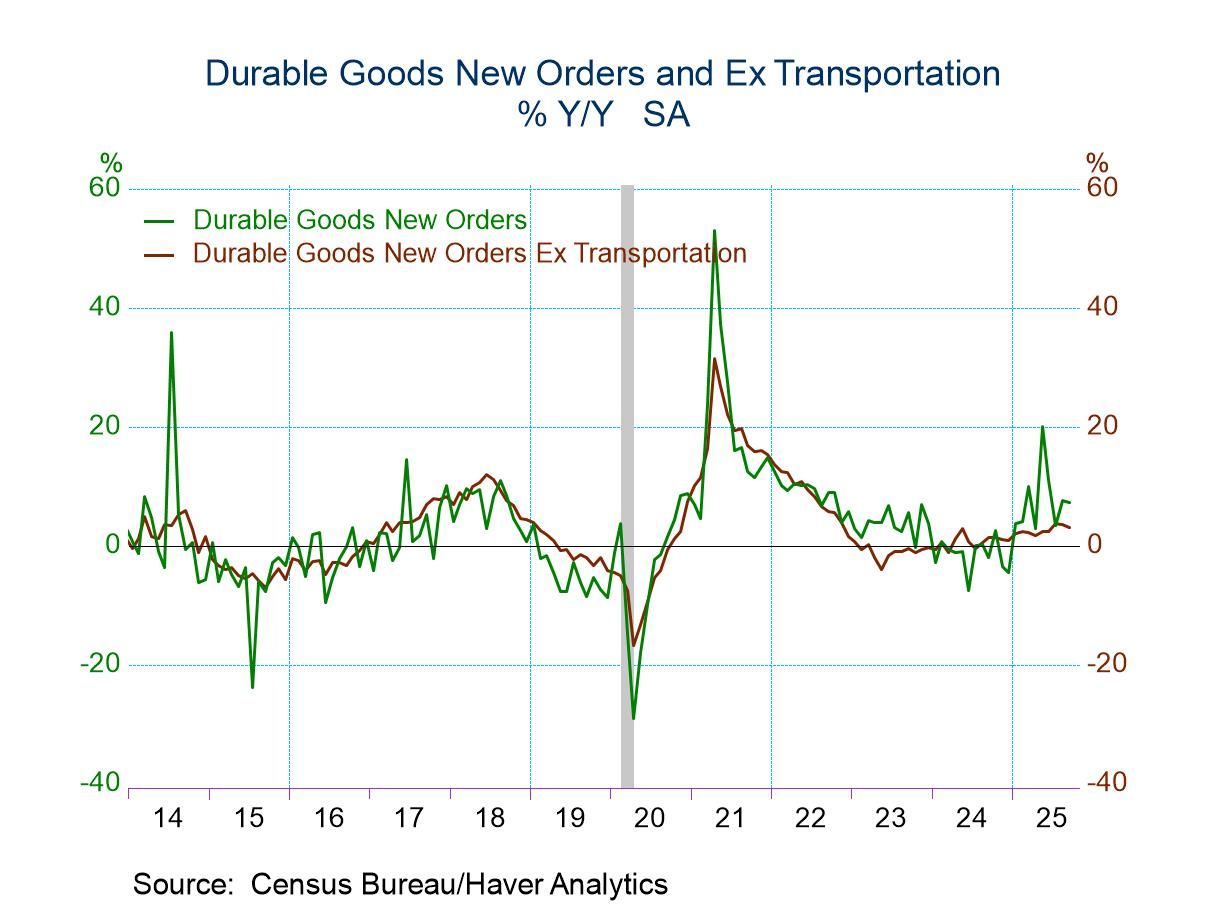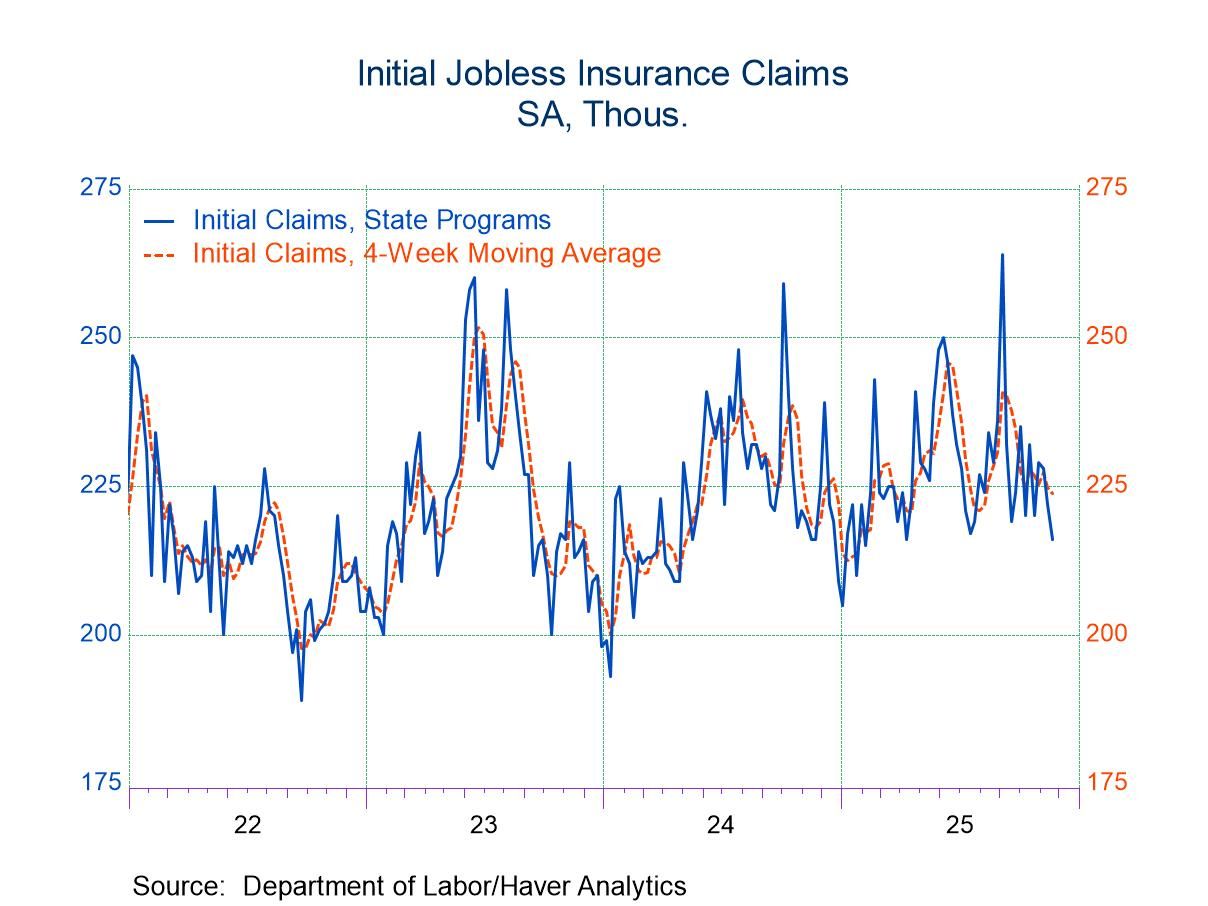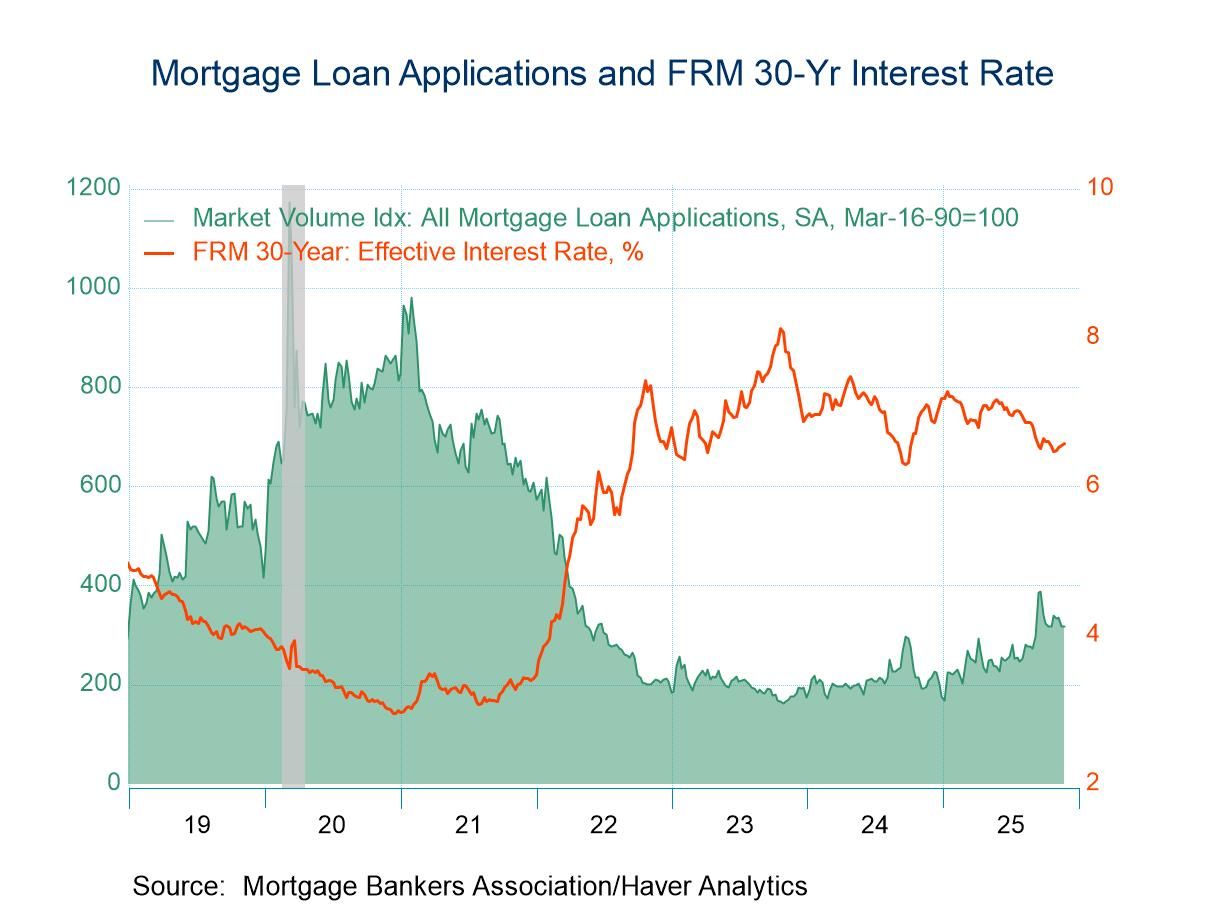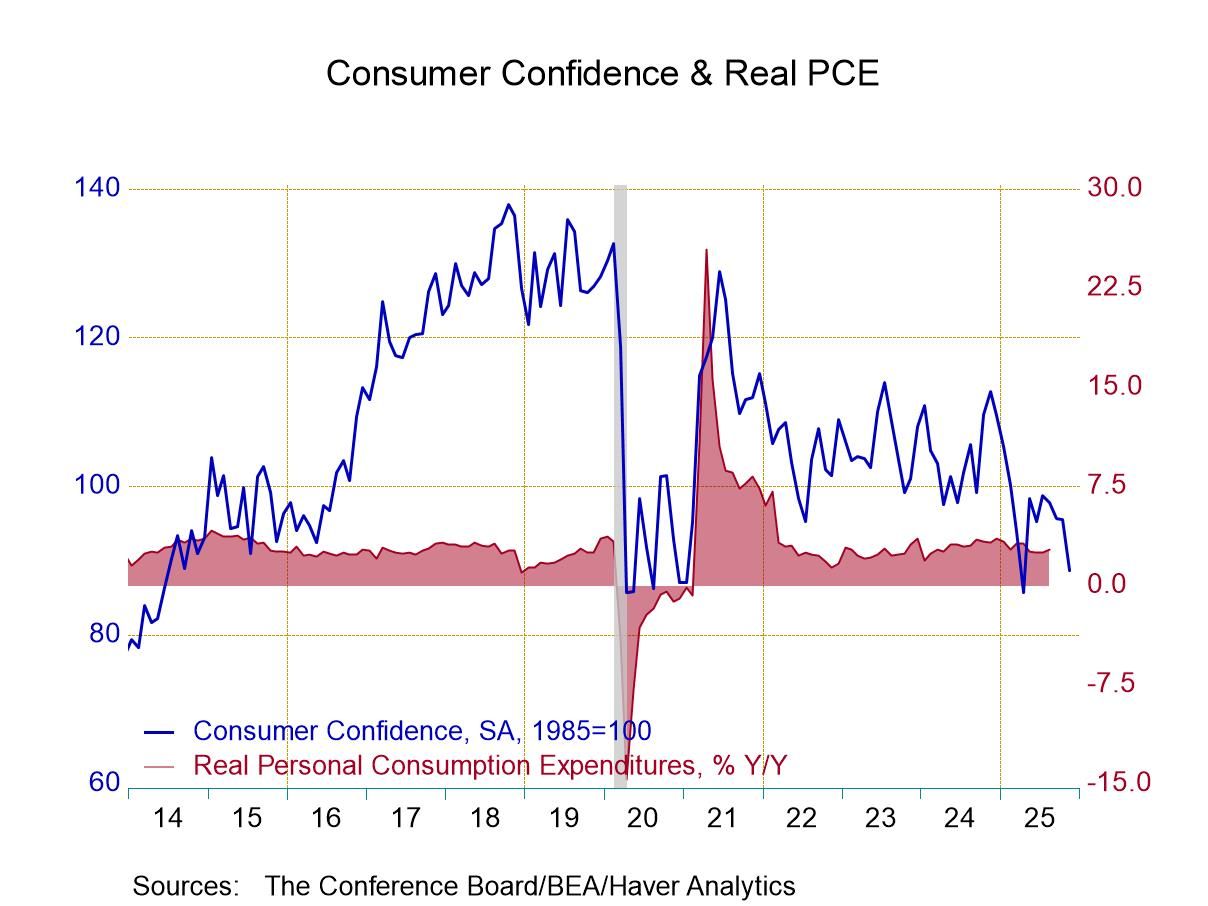FRBNY Empire State Manufacturing Index Jumped 22 points in July
by:Sandy Batten
|in:Economy in Brief
Summary
- The first positive reading for the index since February.
- The July jump reflected widespread increases across components.
- Evidence of some nascent supply-chain problems.
- Outlook six months ahead continues to brighten.


The Empire State Manufacturing Index of General Business Conditions jumped nearly 22 points to 5.5 in July from -16.0 in June, according to the Empire State Manufacturing Survey released by the Federal Reserve Bank of New York. A reading of -8.5 for July had been expected by the Action Economics Forecast Survey. The unexpected positive reading in July indicated that business activity in New York State increased for the first month since February. The percentage of respondents reporting an increase in general business conditions in July rose to 32.4% from 16.9% in June while the percentage reporting a decrease fell to 26.9% from 32.9%. The July survey was conducted between July 2 and July 10.
The headline index just reflects the answer to a single question concerning the state of economic activity. Haver Analytics calculates a composite index from the five major components, which is comparable to the ISM manufacturing index. This calculated index increased to 54.7 in July, its highest reading since July 2022 and well above the critical 50 value that separates expansion from contraction, from 48.6 in June. The calculated index is the average of five diffusion indexes: new orders, shipments, employment, supplier deliveries and inventories with equal weights (20% each).
The July jump reflected meaningful increases in most component indexes. The new orders index rose to 2.0 from -14.2. The shipments index increased to 11.5 from -7.2. Unfilled orders edged up to -6.4 from -8.3. Delivery times lengthened to 8.3, the highest reading since July 2022 and possibly an early indication that trade policy uncertainty is beginning to disrupt some supply chains, from 1.8 in June. Moreover, the relatively new supply availability index fell deeper into negative territory at -11.0 versus -8.1 in June. Inventories rose markedly to 15.6 in July, the highest reading since November 2022, from 0.9 in June.
On the labor front, the index for the number of employees rose five points to 9.2, and the average workweek index rose to 4.2, the first positive reading in eight months. This marks the first time that both indexes have been positive since 2022, suggesting that both employment and hours worked increased in July. Sixteen percent of respondents reported an increase in employment, the highest since March 2023, versus 14.6% in June while only 6.9% reported a decline in employment, the lowest since June 2022, down from 9.9% in June.
The prices paid index rose nine points to 56.0, pointing to a pickup in input price increases, while the prices received index held steady at 25.7, suggesting that selling price increases remained moderate though elevated relative to normal pre-pandemic levels. Slightly more than 29% of respondents reported an increase in prices received in July, the same as in June.
Firms remained fairly optimistic about the outlook. The index for future general business conditions edged up to 24.1 from 21.2 in June, suggesting that, on the whole, businesses expect activity to increase in the months ahead. New orders and shipments are expected to increase, and supply availability is expected to be little changed. Capital spending plans jumped markedly to 9.2 in July from -7.3 in June and -6.7 in May.
The headline index reflects the answer to only one question concerning general business conditions and is not calculated from the components. The indexes in this report are diffusion indexes and measure the percentage of respondents indicating an increase minus the percentage indicating a decrease with zero separating expansion from contraction.
The New York Fed survey data are contained in Haver’s SURVEYS database. The expectations series is in Haver’s AS1REPNA database.


Sandy Batten
AuthorMore in Author Profile »Sandy Batten has more than 30 years of experience analyzing industrial economies and financial markets and a wide range of experience across the financial services sector, government, and academia. Before joining Haver Analytics, Sandy was a Vice President and Senior Economist at Citibank; Senior Credit Market Analyst at CDC Investment Management, Managing Director at Bear Stearns, and Executive Director at JPMorgan. In 2008, Sandy was named the most accurate US forecaster by the National Association for Business Economics. He is a member of the New York Forecasters Club, NABE, and the American Economic Association. Prior to his time in the financial services sector, Sandy was a Research Officer at the Federal Reserve Bank of St. Louis, Senior Staff Economist on the President’s Council of Economic Advisors, Deputy Assistant Secretary for Economic Policy at the US Treasury, and Economist at the International Monetary Fund. Sandy has taught economics at St. Louis University, Denison University, and Muskingun College. He has published numerous peer-reviewed articles in a wide range of academic publications. He has a B.A. in economics from the University of Richmond and a M.A. and Ph.D. in economics from The Ohio State University.






